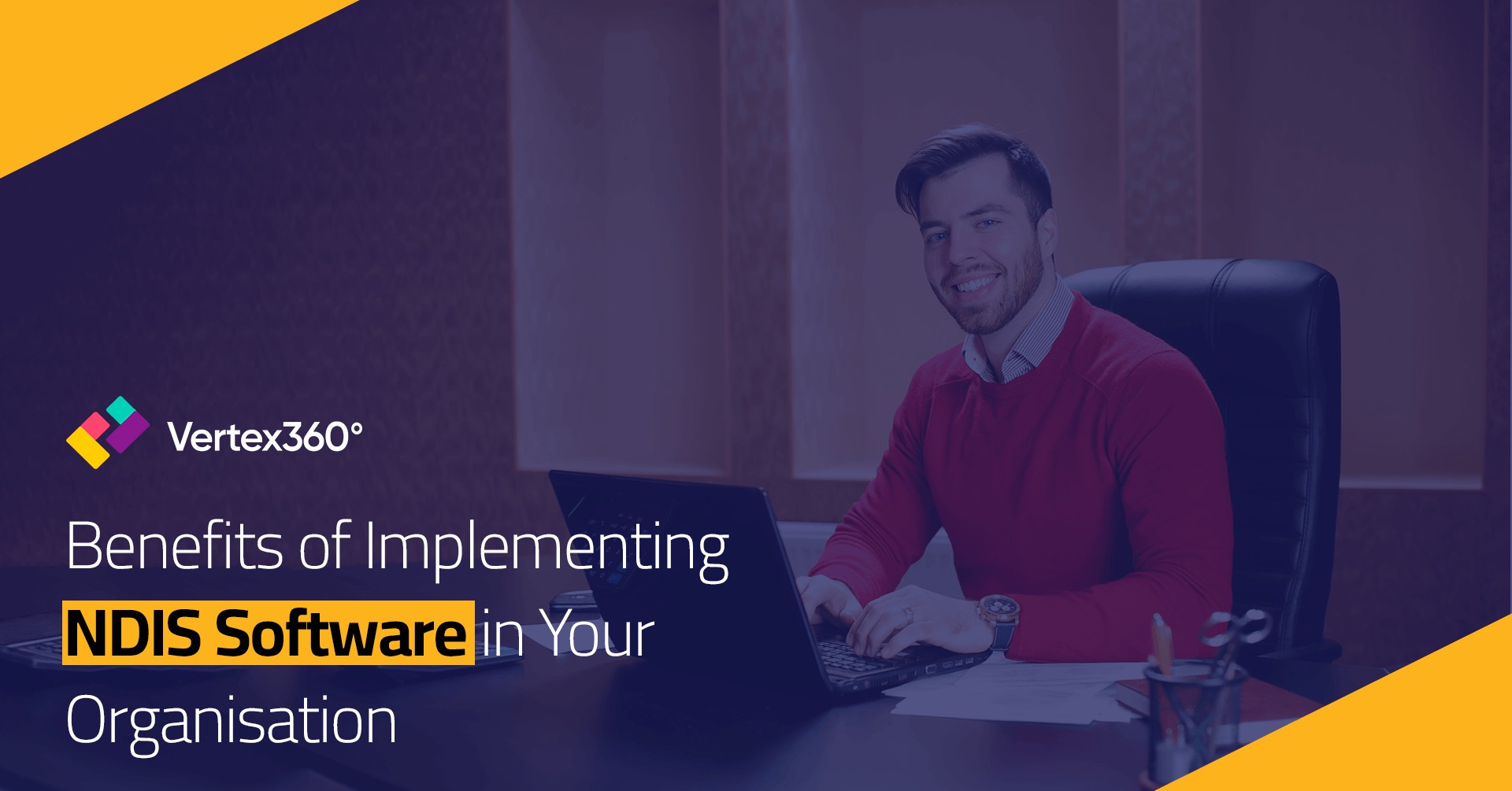NDIS software simplifies how organisations in the NDIS sector operate. It’s crafted to meet the unique needs of NDIS providers, helping them stay efficient, compliant, and deliver better care. Whether big or small, organisations benefit from easier processes, real-time updates, and more accurate reporting tools. This not only improves the quality of service but also makes managing care delivery much smoother. It’s a real game changer for those navigating the complexities of the NDIS system.
1. Enhancing Operational Efficiency
One of NDIS software’s most significant advantages is its streamlining operations across the board.
- Streamlined Processes: Instead of relying on manual paperwork and tracking, NDIS software allows you to automate administrative tasks. Staff can manage and update client data, monitor progress, and complete essential forms in one centralised system. This not only saves time and but also reduces the risk of human error, allowing care NDIS providers to focus more on delivering quality care.
- Real-Time Data Access: Real-time data access empowers support workers and managers to instantly view updated participant details, schedules, and critical updates. With the most current information always available, workers can deliver the best care possible, improving responsiveness and ensuring that care is tailored to the participant’s immediate needs. This boosts efficiency, reduces delays, and enhances overall care delivery.
2. NDIS Compliance and Data Privacy
Compliance with NDIS standards commission’s regulations is mandatory, and NDIS software like Vertex360 simplifies this process significantly.
- Automated Compliance: NDIS providers usually need to maintain and manage hectic paper work and record keeping to stay compliant with the NDIS regulations. NDIS software automates many tasks, ensuring that necessary forms and data are completed accurately and stored securely. Using software like Vertex360 not only saves valuable time but also lowers non-compliance risk, which is especially beneficial for small providers without dedicated compliance teams.
- Data Privacy: NDIS software solutions are designed with strong security measures to ensure the protection of sensitive participant information. These solutions prioritize privacy, ensuring that personal and medical data are securely stored and accessible only to authorised personnel. This helps organisations comply with legal requirements while also fostering trust with participants by safeguarding their privacy.
3. Better Participant Experience
An essential focus for any care provider is the participant experience. NDIS software improves how participants interact with their support team and how they receive care.
- Personalised Care Plans: Customisation is key when supporting individuals with varying needs. NDIS software allows providers to easily tailor care plans to each participant’s unique goals, preferences, and needs. This level of personalisation can lead to better outcomes for participants, who feel seen and supported in ways that genuinely matter to them.
- Transparent Communication: Communication between participants, their families, and care providers is crucial. Many NDIS software solutions include features that facilitate smooth communication, whether through notifications, updates, or shared access to relevant data. This transparency strengthens relationships and ensures everyone involved stays informed and aligned on participant care goals.
4. Efficient Financial Management
Financial management can be challenging for NDIS providers, especially smaller organisations. NDIS software offers tools to make these processes smoother and more accurate.
- Automated Billing and Invoicing: Automated Billing and Invoicing simplifies the billing process, by reducing errors and improving efficiency for providers of all sizes but is particularly advantageous, for providers who rely on accurate payments to sustain their operations.
- Tracking Budget and Funding: NDIS participants receive funding to cover their care needs, and providers must track and manage these budgets accurately. NDIS software offers tools to monitor fund allocation, helping providers stay within budget while meeting participant needs. This transparency is essential for providers and participants who want to maximise the impact of their available resources.
5. Improved Scheduling and Rostering
Scheduling and rostering are critical components of care delivery, especially for larger teams and complex participant needs.
- Shift Management: Proper shift management reduces scheduling conflicts and ensures participants receive support. NDIS software simplifies rostering by allowing managers to assign shifts and make changes in real time, helping to keep the team aligned and well-coordinated.
- Optimising Resource Allocation: Using scheduling features that track staff availability, qualifications, and participant needs, providers can ensure that the right workers are matched with the right participants. This alignment improves service quality and reduces the strain on support staff, making operations more sustainable and effective.
6. Reporting and Analytics
Today, organisations take data driven decisions to continuously improve their services.
- Data-Driven Decisions: NDIS software helps providers monitor important aspects like participant care, worker performance, and overall operations. By tracking this data, organisations can spot areas that need improvement, streamline processes, and make smarter decisions about resource distribution. This leads to more efficient care and better outcomes for participants.
- Simplified Reporting: NDIS providers often need to generate reports for compliance, audits, and performance reviews. Software that automates this reporting process saves time and avoids the hectic manual data entry. Producing clear, accurate reports also helps build credibility with participants and regulators.
7. Scalability and Future Growth
Scalability is key to long-term success for small and growing providers, and NDIS software offers the tools to grow seamlessly.
- Adapting to Growth: As demand increases, organisations need systems that can grow. NDIS software supports providers as they scale up, offering features that accommodate expanding participant rosters, larger staff teams, and more complex needs.
- Future-Ready Technology: With the ever changing regulations and industry evolution, NDIS software vendors regularly update their platforms. They introduce new features to meet changing industry needs. By choosing the right NDIS software like Vertex360, organisations can ensure they’re prepared for future growth and ever changing participant needs as well staying compliant to NDIS.
8. Conclusion
Vertex360, a leading NDIS software in NDIS landscape, can transform the way NDIS providers handle data and other everyday tasks. Vertex360 is designed by leading NDIS consultants and industry experts to streamline operations, automate compliance, and enhance participant experience.
With the most essential features like rostering, invoicing, participant onboarding, NDIS providers can easily manage staff and deliver care. Vertex360’s reporting, rostering, and secure data handling features make it an excellent choice for small providers and larger organisations, setting a new standard for care management in the NDIS sector.
By adopting Vertex360, NDIS providers can efficiently manage participant care, improve compliance, and position themselves for growth—all while enhancing the quality of service they provide.





